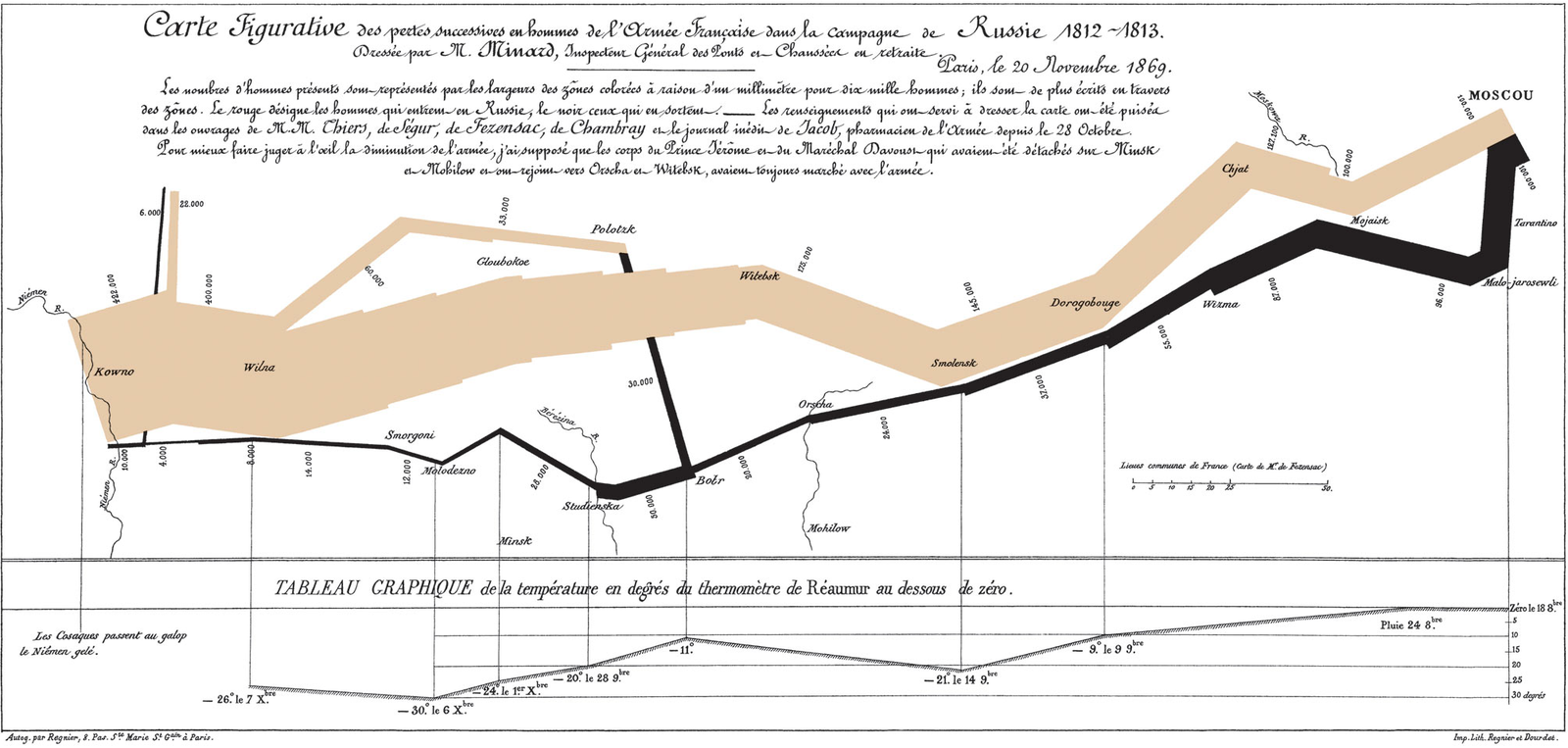advance

Minard’s map of Napoleon’s advance is a wonderful early example of data visualization, and much more dynamic than the static structures of 1.e4 e6 2.d4 d5 3.e5…
tl;dr
- Mainly appeals to white players who enjoy strategically clear positions, often black plays c4 and the position is blocked.
- Some barbarian white players gambit the d-pawn there are a couple of dangerous variations to be aware of.
- Move order note: I play Qb6 before Nc6 to avoid Kupreichik’s Be3 line, a side benefit is that white has to consider the manoeuvre Bd7-b5. Cost is white’s a3 becomes stronger.
so many crazy gambits
Two gambits to know about here, but don’t be scared - objectively if white gambles a central pawn he is taking a risk and may easily end up seriously worse.
- Milner-Barry gambit 1.e4 e6 2.d4 d5 3.e5 c5 4.c3 Qb6 5.Nf3 Nc6 6.Bd3, loved by schoolchildren because of the trap Bb5+ winning the queen. General plan is to play a6 rather than take on e5 - tricks are for kids 😀
- 9. Nbd2 Gambit starts like the Milner-Barry, a dangerous line I first saw recommended for white in this video by Alisa Melekhina - she describes it as like a c3-Sicilian.
The analysis in the games below is by Neil McDonald, from the Chess Publishing website.
blocked positions with c4
some crazy game with a Kd7 Qg8 Qh7 manoeuvre to escape the pawn chain
Ne7 or Nh6
can’t remember how to get to Nf5 sure there was something about it
Qb6 or Bd7
There’s a strategy of Bb5 to exchange light-squared bishops, but it’s probably rubbish
white takes on c5
some vague memory that Steinitz used to do this…